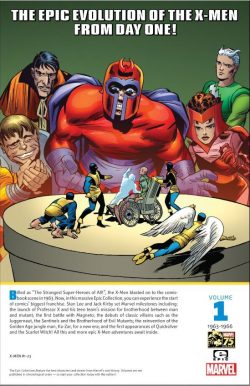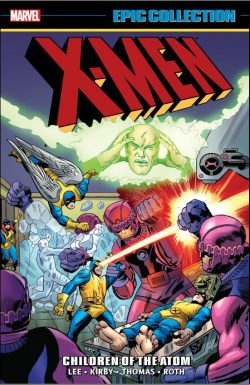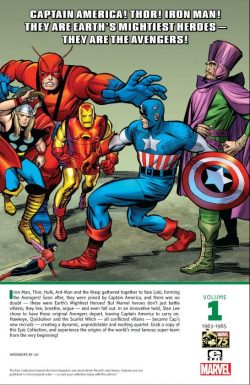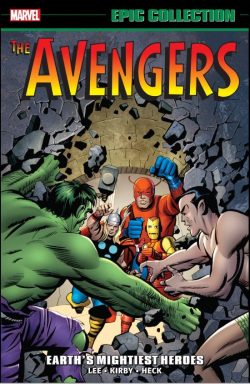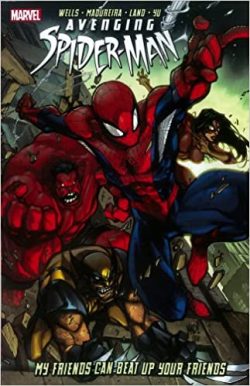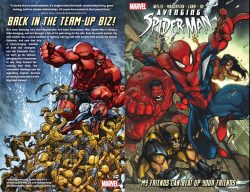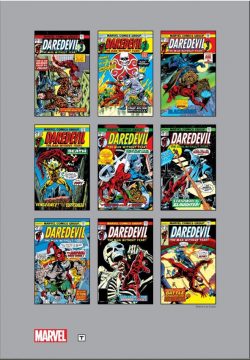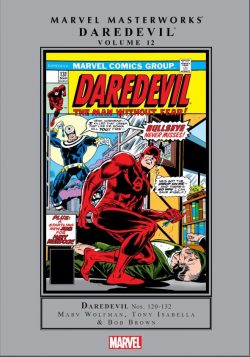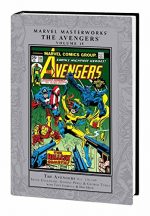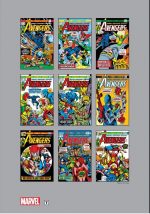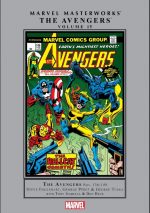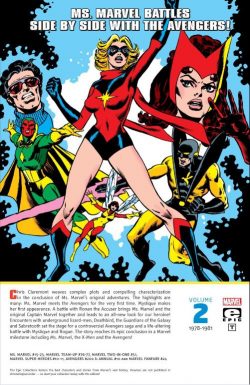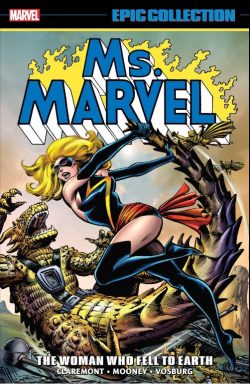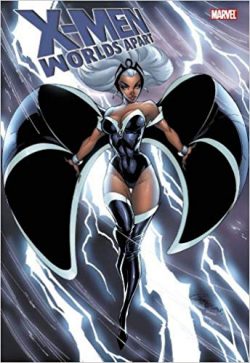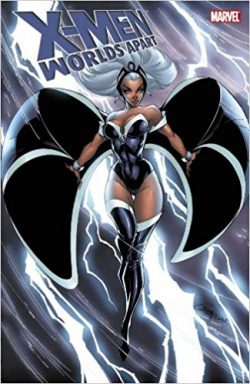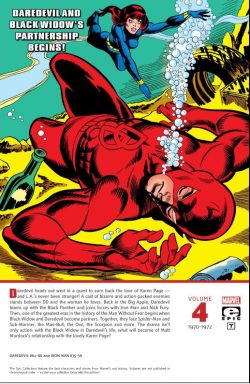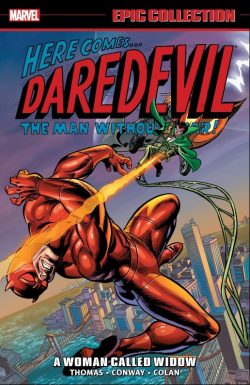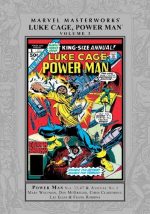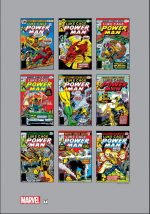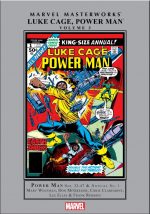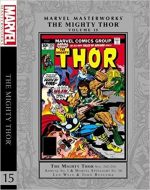
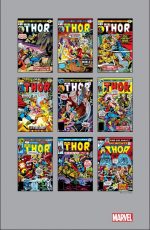
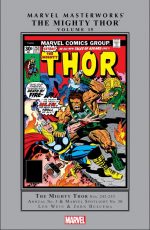
By Len Wein, David Anthony Kraft, Steve Englehart, John Buscema, Pablo Marcos & various (Marvel)
ISBN: 978-0-7851-9919-9 (HB)
Once upon a time, disabled doctor Donald Blake took a vacation in Norway only to stumble into an alien invasion. Trapped in a cave, he found an ancient walking stick which, when struck against the ground, turned him into the Norse God of Thunder! Within moments he was defending the weak and smiting the wicked.
Months swiftly passed with the Lord of Storms tackling rapacious extraterrestrials, Commie dictators, costumed crazies and cheap thugs, but these soon gave way to a vast kaleidoscope of fantastic worlds and incredible, mythic menaces, usually tackled with an ever-changing cast of stalwart immortal warriors at his side…
Whilst the ever-expanding Marvel Universe had grown ever-more interconnected as it matured through its first decade, with characters literally tripping over each other in New York City, the Asgardian heritage of Thor and the soaring imagination of Jack Kirby had most often drawn the Thunder God away from mortal realms into stunning, unique landscapes and scenarios.
However, by the time of this power-packed compendium, the King was long gone and was in fact readying himself to return to the House of (mostly his) Ideas, and only echoes of his groundbreaking presence remained. John Buscema had visually made the Thunder God his own, whilst a succession of scripters struggled to recapture the epic scope of Kirby’s vision and Stan Lee’s off-kilter but comfortingly compelling faux-Shakespearean verbiage…
This power-packed hardback and digital compilation gathers the contents of Thor #242-254, Annual #5 and Marvel Spotlight #30 spanning December 1975 through December 1976, and leads with a forthright Introduction from writer/editor Len Wein on his assumption of the title.
After a rapid, round-robin flurry of writers who detailed how lordly Odin went missing and was found and freed from bondage to a pantheon of Egyptian gods, a semblance of creative stability resumed with #242 as Wein joined John Buscema & Joe Sinnott to commence their tenure with epic time travel tale ‘When the Servitor Commands!’
In the 20th century, the colossal all-conquering construct scoops up Thor, his lover Jane Foster (mystically imbued with the life force of goddess Sif) and visiting Asgardians Fandral the Dashing, Voluminous Volstagg and Hogun the Grim at the behest of despotic chrononaut – and old enemy – Zarrko the Tomorrow Man…
The time tyrant claims to be on the side of the angels this time: looking for heroes to help stop a trio of entropic entities travelling back from the end of eternity, callously destroying all life as they go. Although suspicious, the assembled crusaders agree to help stop< ‘Turmoil in the Time Stream!’ caused by the uncanny Time-Twisters…
Clashes with vagrant monsters and warriors plucked from other eras barely slows the heroes, but neither do they hinder the widdershins progress of the Armageddon entities in ‘This is the Way the World Ends!’ However, by the time the voyagers discover ‘The Temple at the End of Time!’ which originally spawned the Time-Twisters and end the crisis before it began, Zarrko has already reverted to type and tried to betray them… much to his own regret…
A rematch between Thunder God and extraterrestrial Flaming Fury sparks up in #246 as ‘The Fury of Firelord!’ follows the unworldly alien’s meeting with a lovely witch working for Latin American rebel and would-be tin pot dictator El Lobo. Whilst Thor heads south to stop a civil war, in Asgard his boon companion Balder comes to a staggering conclusion: Odin may be back in body but his spirit is still ailing. In fact, the All-Father might well be completely insane…
When Thor also succumbs to sinister gypsy enchantments and ‘The Flame and the Hammer!’ unite to crush the feeble democracy of Costa Verde, once again vibrant valiant Jane is there to save the day…
An out-of-chronology break follows as the 30th issue of try-out title Marvel Spotlight delivers a tale of the Warriors Three. In ‘A Night on the Town!’ (by Wein, Buscema & Sinnott) Fandral, Volstagg and Hogun are drawn into a tale of love on the rocks when their Manhattan carousal is interrupted by a woman’s suicide attempt. Her call for help soon impels the heroic trio to save her fiancé from a life of crime and leads to action, adventure and ultimately matrimony…
Back in Thor #248, ‘There Shall Come… Revolution!’ (inked by Tony DeZuñiga) starts the build-up to anniversary issue #250 with the earthbound Asgardians called back to the Realm Eternal by bold Balder whose battered body is living proof that Odin has become a brutal, vicious tyrant. The rebellion builds in kThe Throne and the Fury!’ (by Wein, Buscema & DeZuñiga, and featuring the first of a series of covers by returning Jack Kirby) as Thor and Company batter their way into the godly citadel. As the heroes seek to ally with old enemy Karnilla the Norn Queen, amidst the madness, Jane assumes the form of Sif just in time to join in a potential universe-shattering battle as Odin is proved an imposter and defeated in ‘If Asgard Should Perish…!’
In the aftermath – AKA #251 – the search for the true All-Father takes Thor into the underworld to see if Odin is dead. Despite cataclysmic combat against the legions of the dead, ‘To Hela and Back’ proves a frustrating waste of time, barely ameliorated by a new clue in #252. ‘A Dragon at the Gates!’, by Wein, Buscema & DeZuñiga, sees the Thunderer undertake a quest for knowledge that draws him into another brutal battle with ultimate troll Ulik which concludes in the next issue with ‘Chaos in the Kingdom of the Trolls’ and seeming defeat for the Prince of Asgard…
These issues also include a return for venerable back-up series Tales of Asgard, Home of the Mighty Norse Gods: a saga of Thor’s boyhood by David Anthony Kraft & Pablo Marcos wherein the young warrior learns the value of restraint and self-reliance while learning how to wield Mjolnir in The Weapon and the Warrior!
Thor’s hunt for his father will be continued in the next Masterworks volume but this one holds still more action and drama in the form of Mighty Thor Annual #5 which depicted ‘War of the Gods!’
Crafted by Steve Englehart, Buscema & DeZuñiga, it opens with the origin of Asgard’s gods and explains the geographical limitations of pantheons and worship before adolescent Thor is drawn by his earthly worshippers into battle with a pantheon he never knew of.
As the territorial clash between Norsemen and invading Greeks escalates, Asgardians and Hellenics fight to the death but aloof Odin and Zeus know a secret that makes all the bloodshed simultaneously pointless and crucial…
This peek into the underpinnings of the ever-expanding Marvel cosmology is followed by the cover of Mighty Thor #254 (which reprinted #159, due to another deadline crisis) and concludes with Kirby’s wraparound cover for Marvel Treasury Edition #10 (which collected the original Mangog saga from Thor #154-157), house ads, original pre-correction cover art for #253 and a gallery of Buscema art pages.
The tales gathered here may lack the sheer punch and verve of the early years but fans of ferocious Fights ‘n’ Tights fantasy will find this tome still stuffed with intrigue and action, magnificently rendered by artists who, whilst not possessing Kirby’s vaulting visionary passion, were every inch his equal in craft and dedication, making this a must-read for all fans of the character and the genre.
©1975, 1976, 2016 Marvel Characters, Inc. All rights reserved.

